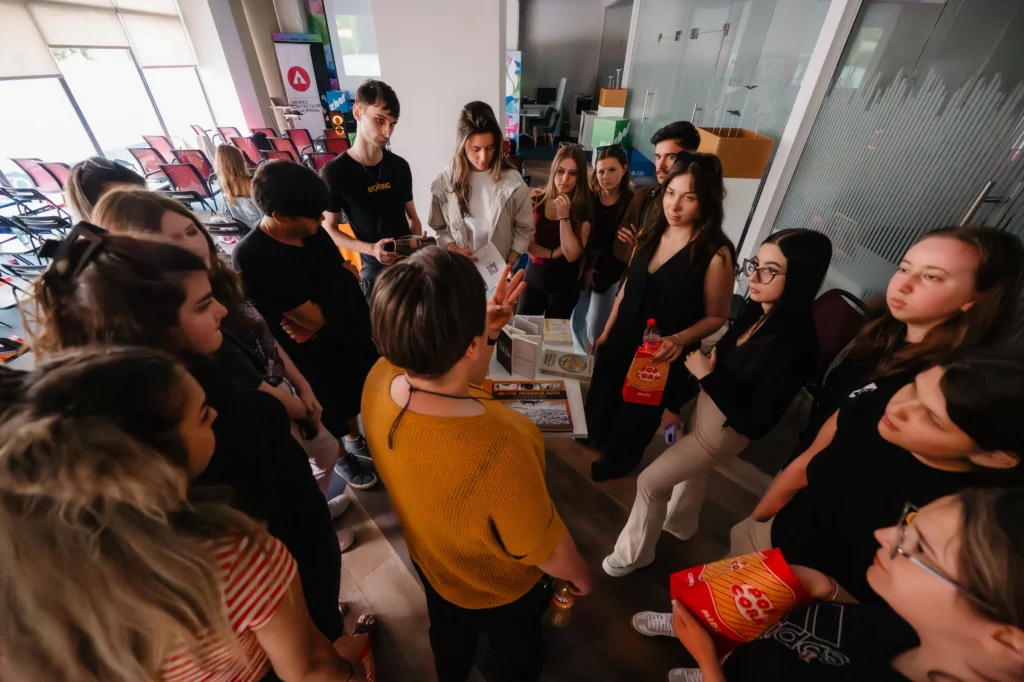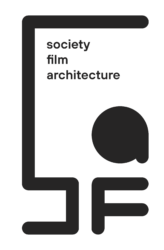Architecture is deeply embedded in our society and culture, narrating the story of our progress, values, and aspirations. Yet the deeper meaning behind a building’s design often remains elusive. Beyond aesthetic appreciation, every structure carries narratives—stories of context, ideology, memory, and collective imagination.
This is where cinematography comes into play. As a form of visual culture, cinema provides a powerful lens through which architecture can be read, reinterpreted, and critically questioned. By connecting film and architecture, SF(a) – Society. Film. Architecture invites participants to explore not only the built environment but also the social and cultural systems that shape it.

genre: ARCHITECTURE, CINEMATOGRAPHY AND ILLUSTRATION WORKSHOP
target group: architecture, visual arts & design, and letters students
workshop outcomes: Alternative posters & Literary and Film Chronicles
runtime: 2022 onward
season 1 (2022): Blade Runner & PostModernism
season 2 (2023): Metropolis & Modernism
season 3 (2024): A Clockwork Orange & Brutalism
season 4 (2025): Blade Runner 2049 & HyperModernism
season 5 (2026): … loading
SF(a) Goals
SF(a) – Society. Film. Architecture is designed as a cross-disciplinary workshop combining didactic elements (public lectures, screenings, debates) with practical activities (graphic workshops, poster design, creative writing). The programme aims to:
- Foster applied creativity and critical reflection;
- Encourage the application of theoretical knowledge in real-world contexts;
- Cultivate critical analysis of cinematic works as cultural and architectural artefacts;
- Develop graphic communication skills through hands-on experience with digital tools;
- Promote adaptability, competitiveness, and teamwork;
- Strengthen analytical and synthesis abilities;
- Build a sense of belonging within a collaborative and interconnected educational environment.

The project also promotes knowledge exchange across a variety of academic fields, including architecture theory, urban sociology, philosophy, visual culture, literature, and history, while integrating artistic practices from photo-video, design, and contemporary art. Group talks and creative labs bring together students and tutors in a shared space of exploration.
Why Dystopia?
Why use dystopia as an alternative educational method? The question could also be reversed: why not?
Architecture does not exist in isolation—it is a manifestation of societal forces. Like cinema or literature, it embodies the aspirations, values, and anxieties of its time. No one designs a building solely to convey a message, just as no one sets out to construct a dystopian society. Yet dystopia remains an invaluable conceptual tool: it sharpens our critical perspective, allows us to deconstruct prevailing ideologies, and reveals alternative futures.
In the current socio-cultural landscape, dystopia has moved beyond fiction; it acts as a mirror and critique of the present, encouraging students to examine how architecture both shapes and is shaped by contemporary crises and imaginaries.
Target Group and Partners
Participation is voluntary and open to students in architecture, visual arts, design, literature, and related fields. At the first edition (2022), 25 students enrolled; in Season 2 (2023), participation grew to 65 students. Lectures and screenings were open not only to workshop participants but also to the wider public.
To bring these activities to life, the project collaborates with the Association of Architecture Students in Iași (ASAI)and the Romanian Order of Architects – Iași Branch (OAR Iași), alongside other institutional and cultural partners. Each edition is typically structured as a six-day programme, held between late June and early July, combining intensive workshops, lectures, and public exhibitions.
Season 3 & 4 of this project were supported by the Romanian Order of Architects, from the Architectural Stamp Duty.


